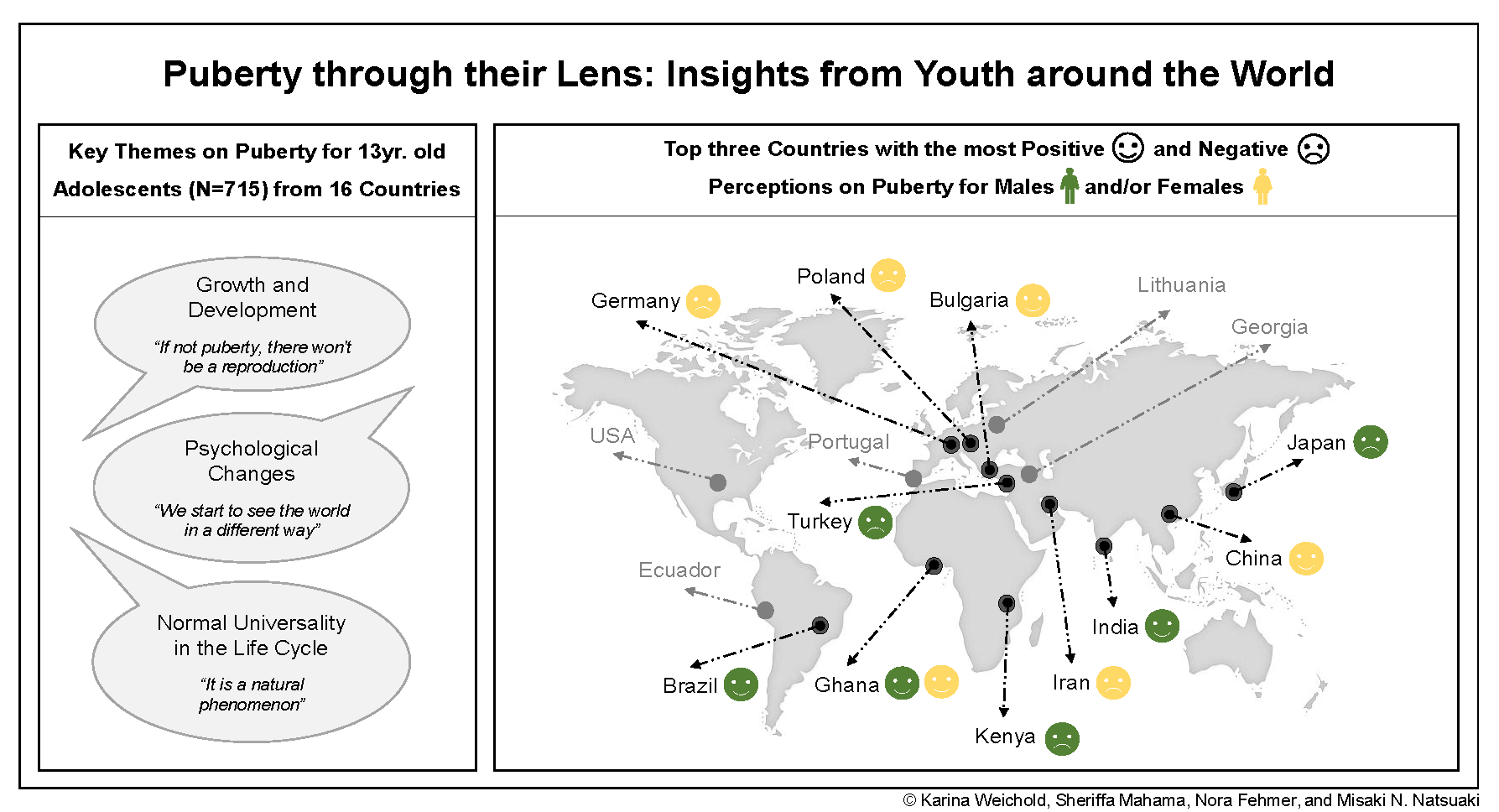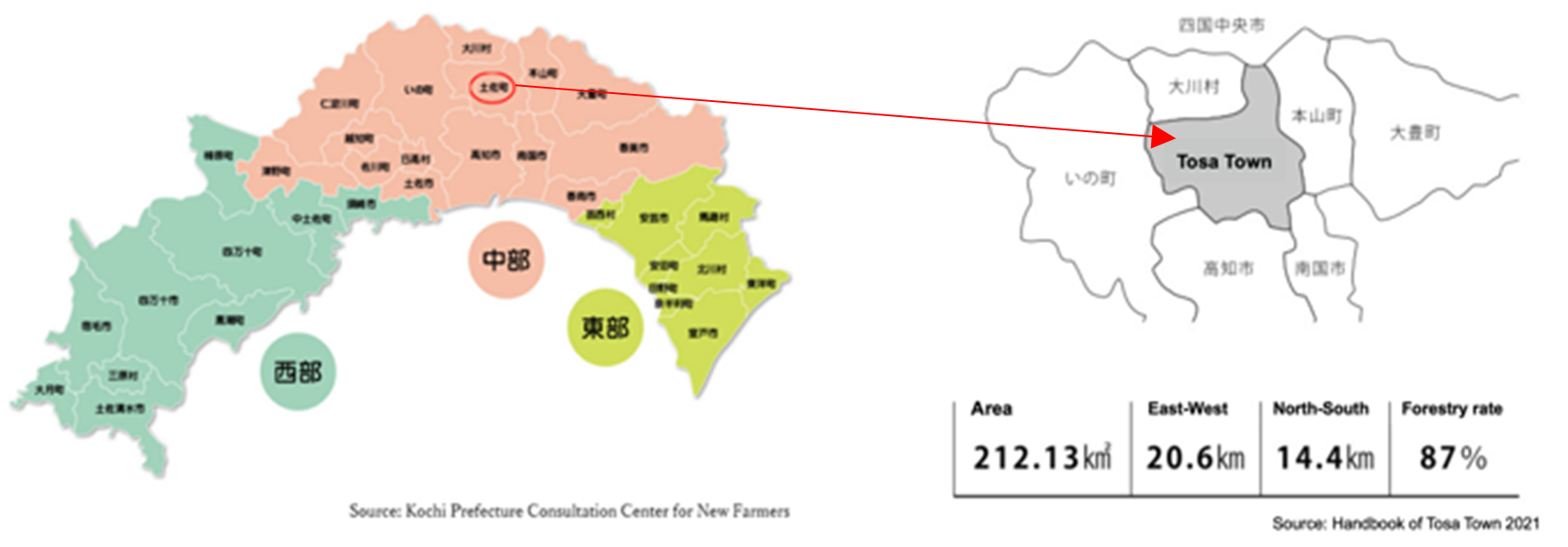Found 2 results
Open Access
Article
30 April 2025Puberty through Their Lens: Insights from Youth around the World
Puberty, as the biological process of sexual maturation during adolescence, is a human generality that occurs across cultures. Primarily based on quantitative data from Western industrialized countries, puberty has been characterized as troublesome and stressful for adolescents. It has been linked to negative personal perceptions and negative consequences for psychosocial adaptation. These effects seem to be amplified by risks within proximal social interactions, which, in turn, are embedded in the broader cultural context. Using mixed-methods approach, the current exploratory study investigated the personal perceptions of puberty among adolescents from various cultural backgrounds. Data from 16 countries from Africa, America, Asia, and Europe were analyzed (13 yr., N = 715; 50.3% female). Differences in positive vs. negative personal perceptions of puberty emerged across cultures and genders, and qualitative statements of girls and boys reveal important insights into the proximal developmental mechanisms to well-being and health during the pubertal transition around the world. These findings not only enrich basic research but also inform gender-sensitive and culturally sensitive prevention and intervention tools for adolescents.

Open Access
Article
21 August 2023Role of Youth in Implementing SDGs Future City in Tosacho, Kochi, Japan
The “SDG Future Cities” established by the SDG (Sustainable Development Goals) Promotion Headquarters of Cabinet Office of Government of Japan, are being expanded to all municipalities in Japan through government support for the efforts of leading municipalities. Tosa town is a small town with less than 4000 people with high aging population and surrounded by mountains in Kochi Prefecture. The town was selected as one of the SDG Future City in 2020. In this paper, through a literature review, interviews with the Tosa Town Office, and a questionnaire survey and interview with residents of Tosa town, we considered what young people need to do to achieve SDG-11. Although Tosa Town has a variety of local government initiatives, the definition of a town where young people can continue to live, as revealed in the literature review, was found to be insufficient in terms of “economic resources,” “decision-making,” “data,” and “knowledge”. However, it was found that “community leaders,” “nature/topography,” and “community/people” are the most important factors for creating a town where people can continue to live. As for future issues, it is necessary to take measures for “decision-making,” “data,” and “knowledge,” as well as to solve issues specific to Tosa town.
